UVM's reputation as a leader in sustainability has evolved out of its history as a public institution dedicated to purpose of improving the economic and social well-being of the people in the state.
1970-1979
1970: First Earth Day
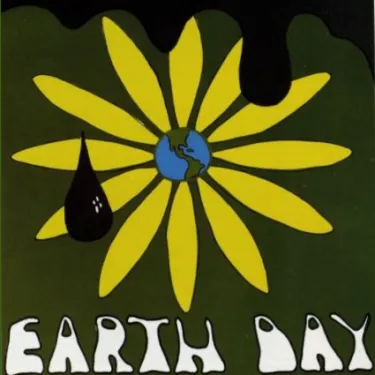
During the first Earth Day, hundreds of people gathered and celebrated at UVM, according to one account in the Ariel yearbook, with a "program of slides, movies, panel discussions and displays . . . held in response to the growing student and non-student concern over the ecological wasteland into which man is rapidly converting the Earth." Earth Day celebrations have since evolved into Earth Week, often including dozens of activities by diverse committees, student groups and departments.
1972: Environmental Programs Established
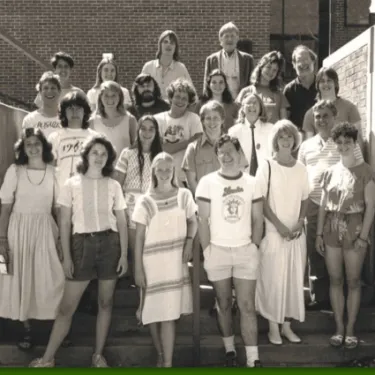
UVM established the nation’s first cross-college Environmental Program, allowing students to earn a bachelor's degree in Environmental Studies whether their home discipline was in agriculture, arts, sciences or education. During its first year, Environmental Studies enrolled just seven students; now 450 majors is more typical. Students are encouraged to take an interdisciplinary, creative approach to learning while catalyzing change. Seniors complete the equivalent of three courses' work in capstone projects designed to integrate their learning with contributions to the community.
1973: School of Natural Resources Founded
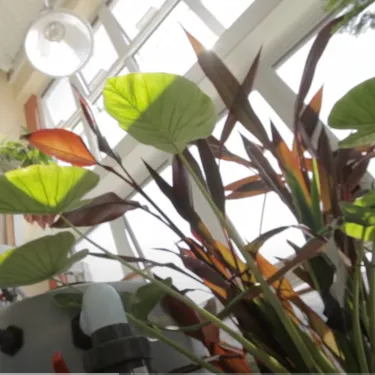
The School of Natural Resources was established in 1973 to prepare "environmentally and socially responsible leaders, scientists, practitioners and advocates who understand the interdependence of people and healthy ecological systems." The school focuses on providing students with the skills to resolve complex environmental challenges by applying their knowledge to real world projects. Renamed the Rubenstein School of Environment and Natural Resources (RSENR) in 2003, the school offers undergraduate, master's and doctoral programs and is home to about 900 students. In 2012 the George D. Aiken Center, home to RSENR since 1982, underwent a major renovation to achieve a LEED Platinum designation, the highest rating offered by the U.S. Green Building Council.
1974: Natural Areas System Established
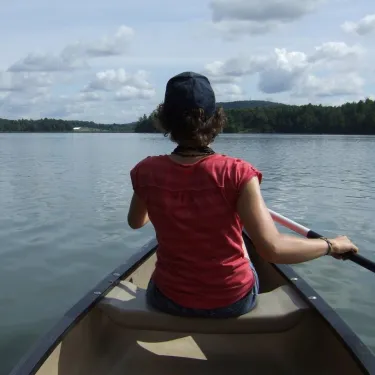
When the Board of Trustees established Natural Areas to be managed by the Environmental Program it recognized the University's responsibility of leadership in identification, protection, and management of important natural areas on university-owned lands. The ten designated natural areas around the state range from the 1000 acres along the shoreline of Shelburne Pond and the lowlands of Colchester Bog to the summit of Mount Mansfield. The Rubenstein School also manages four UVM forests in Vermont that are used for research and educational activities that involve faculty, graduate students and undergraduate students. UVM owns and stewards more than 3000 acres of protected land.
1974: Campus Responds to Global Oil Crisis
In 1974 university leaders, faced with a drastic reduction of its heating fuel supply, quickly instituted a Four-Day Week for the Spring 1974 semester. Class schedules, staff schedules and extracurricular activities were rearranged to allow for "Quiet Mondays." This strategy, along with other energy conservation measures such as lowering thermostats, did result in measurable savings during the semester. However, then UVM President Edward Andrews explained that university leaders decided to "not institute a four-day week in future semesters except as a 'last resort' because of its disruption to academic quality." (This was before the internet and remote learning!)
1980-1989
1980: Energy Planning Begins
As geo-political conflict and another economic recession threatened oil supplies, UVM created an Energy Planning Committee to develop contingency plans and adopt an early version of an energy policy that promoted aggressive programs to control the energy costs of heating and electricity. University leaders at the time emphasized behavior change and "people" efforts such as closing windows. In 1987 the Physical Plant department began overseeing energy conserving measures and hired a full-time energy manager. For over four decades, campus upgrades to systems for lighting, heating, cooling, and ventilation have resulted in lower emissions and millions of dollars of avoided energy costs.
1988: Student Club VSTEP Founded
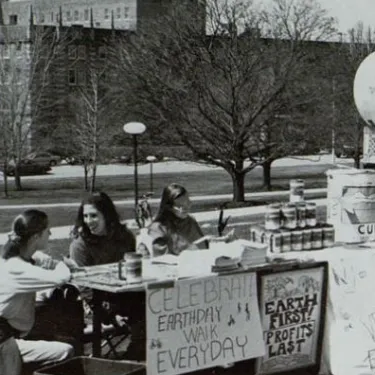
In 1988 students formed Vermont Students for Environmental Protection (VSTEP) to advocate for a comprehensive campus recycling program. VSTEP is the oldest Student Government Association-recognized environmental club on campus. Early initiatives centered on reusable mugs, eliminating styrofoam packaging, and tree planting campaigns. Today VSTEP promotes climate change awareness and citizen activism, organizes film showings and DIY workshops, and hosts a monthly "pop up" Thrift Shop in the campus student center.
1989: Recycling Program Launched
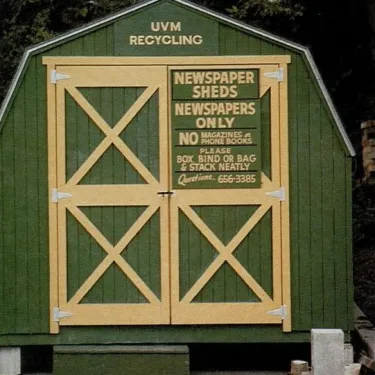
In 1989 the UVM Board of Trustees endorsed recycling efforts of VSTEP students and Physical Plant custodial staff by laying the groundwork for UVM to become an early leader in higher education recycling and waste diversion programs. Evolving from its simple beginning of collecting newspapers from green sheds located around campus, today the comprehensive Recycling and Zero Waste program collects more than 25 materials for recycling and reuse from all campus buildings. In 2019 UVM diverted almost 50% of its waste from the landfill through recycling and composting. UVM also operates a surplus property program for selling and donating used furniture, equipment and vehicles. Learn more about our Zero Waste efforts.
1990-1999
1990: Campus Bus Service Introduced
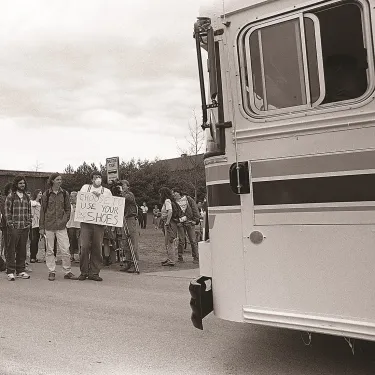
In 1990 UVM’s first shuttle bus transported fans to the newly expanded hockey rink, which students protested at the time (see image). Since then a free bus system has developed to move students, faculty and staff around campus. In the late 1990's students promoted using biodiesel in what were then diesel buses, and for several years the buses ran on a blend of 10% biodiesel, 90% diesel. In 2005 UVM Transportation and Parking Services (TPS) began collaborating with local partners to adopt Compressed Natural Gas (CNG). Subsequently TPS replaced its entire fleet with CNG-fueled buses as the original buses "retired" out of the fleet. Today, TPS owns and operates ten CNG buses maintained by trained in-house staff in a state-of-the-art garage. Bus locations are tracked in real-time via the CATS Real-Time Tracker called TransLoc. Learn more about the bus fleet here.
1992: Energy Efficiency Revolving Fund Created
In 1992 an energy revolving fund of $125,000 was established to finance small efficiency projects eligible for rebates from local utility companies. Rebates were funneled back into the revolving fund. In 2012 UVM Trustees approved a $13 million Energy Revolving Fund, and UVM joined the Sustainable Endowment Institute's "Billion Dollar Green Challenge." The $13 million fund leverages monies from the university's low interest-bearing cash-on-hand account to invest in energy efficiency projects of up to $3 million, with a payback of less than seven years. Other energy projects have been funded over the years through bonds, debt borrowing, and by taking longer term ROI (return on investment) factors into account for new capital construction.
1995: Campus Sustainability Course Begins
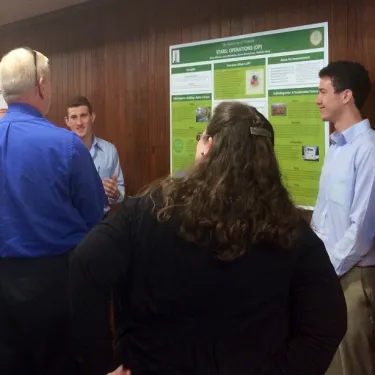
A semester-long "Campus Sustainability" course offered through Environmental Studies forged formal academic connections between students and professional staff who oversee campus operations such as environmental health and safety, energy management, solid waste and recycling, transportation, and grounds. The sophomore-level, project-based course supported the work of what in 1996 became the UVM Environmental Council. The course development team included middle-level managers—the campus practitioners of sustainability—and over time expanded to include other staff, graduate students and faculty members. The course was taught from 1995 until 2018.
1996: Environmental Council Forms
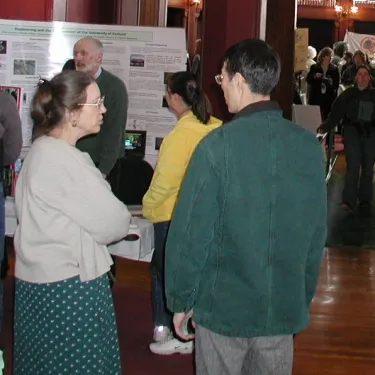
From 1996 until 2008 the UVM Environmental Council served as the primary group promoting collaboration and idea-sharing about sustainable development among campus stakeholders. In 1998 a full-time Environmental Coordinator (EC) staff position was created to support the work of the Council. Faculty and staff co-chairs led large monthly meetings of motivated students, faculty and staff, and advanced policy change. The EC collaborated with the Campus Sustainability class and facilities staff to advance best practices and produce performance reports on key environmental indicators. Tracking UVM: Environmental Report Card 1990-2002identified energy efficiency successes as well as gaps in environmental literacy.
1997: Composting Program Launched
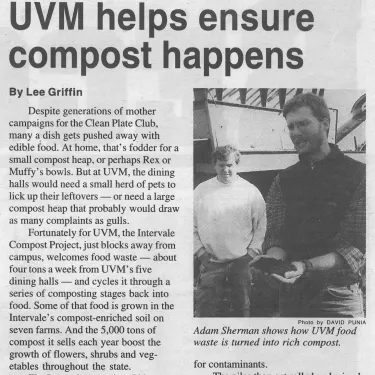
In 1997 a formal program to collect food waste for composting began in all dining halls. Food scraps (organics) were hauled to the non-profit Intervale Compost Facility, which had just opened its operations in Burlington. This local partnership continued in various forms until 2011, when Chittenden Solid Waste District (a local municipal authority) bought the compost operation and renamed it Green Mountain Compost. Today campus diverts more than 180 tons of organic waste annually to composting. Campus zero-waste programs also emphasize reducing the amount of of food wasted in the first place. These include: trayless dining, food rescue programs, and using the Lean Path system for dining personnel to track and analyze waste in food preparation areas. About UVM composting.
2000-2009
2002: Gund Institute for Ecological Economics Founded
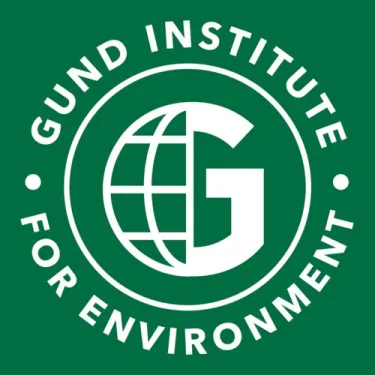
The Gund Institute for Ecological Economics (GIEE) was founded at the University of Vermont in 2002. The Institute became an internationally recognized leader in ecological economics, and a hub for interdisciplinary scholarship at UVM. In 2017 GIEE was replaced by the Gund Institute for Environment with a broader mission: to mobilize scholars and leaders to understand and solve the world’s most important environmental challenges. Read about recent research here.
2003: Stormwater Management Upgraded
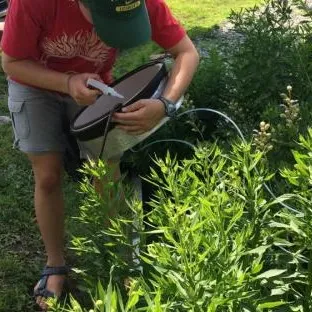
After receiving state designation as a "non-traditional Municipal Separate Storm Sewer System (MS4) in 2003 the University developed a comprehensive Stormwater Management Plan updated annually. The campus infrastructure includes five large stormwater detention ponds that collect, detain and treat runoff to reduce sediment and prevent nutrient loading of downstream waters including Lake Champlain. Facilities staff employ best management practices (BMP's) to reduce runoff. In 2007 civil and environmental engineering students installed a bioretention rain garden to control runoff from the Votey parking lot, which is still in use today. Learn more about stormwater program here.
2004: Eco-Reps Program Created
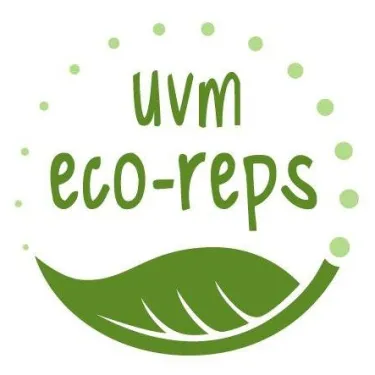
The Eco-Reps Program cultivates environmental responsibility by training student leaders to promote sustainable practices at the University and encourage environmentally responsible behaviors among peers. The UVM program was one of the first in the country and is now a model for many other campuses. It was initiated by the Physical Plant Recycling Program and has been managed by the Office of Sustainability since 2009. While the focus is on students in residence halls, the program has been a collaborative effort among Facilities departments, Residential Life, the student center, and University Dining Services since its inception. See the Eco-Reps website for green living tips!
2004: First Solar Panels Installed
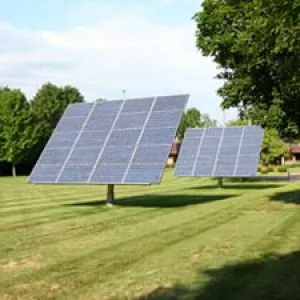
In 2004 the first set of solar panels was installed on the large, south-facing roof of the central heating plant. At the time, these panels constituted the largest single array in Vermont, and served as an early demonstration project for research. Funding was initially provided by the U.S. Department of Energy Million Solar Roofs program and by the Physical Plant Department. In 2013-2014, the array was upgraded and optimized with funding from the UVM Clean Energy Fund. Since then additional arrays have been added that now generate about 1% of UVM's eletricity needs. See them here.
2006: Greenhouse Residential learning Community Created
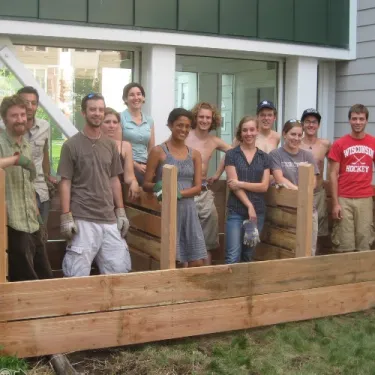
The GreenHouse Residential Learning Community provides opportunities to explore and aquire the skills and qualities needed to create a regenerative present and future at the personal, social, and ecological levels. When it started in fall 2006 with about 200 residents, the community was housed in UVM's first LEED certified residence hall, University Heights South (UHS). The success and popularity of this and other learning communities inspired Residential Life to adopt the learning community model for all of campus. In the redesign, GreenHouse was renamed the Sustainability Learning Community in fall 2016. It is now home to about 700 students living in UHS and Harris Millis.
2006: Green Building Policy Established
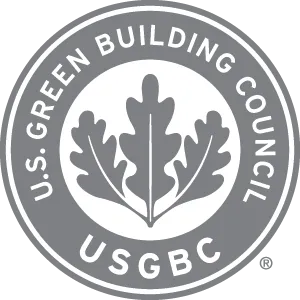
In 2005 UVM committed to a new construction policy adhering to LEED practices, and requiring formal commissioning (quality control). Increased project construction costs are offset by reduced operations costs and other benefits. LEED stands for "Leadership in Energy and Environmental Design," and is a program of the U.S. Green Building Council. In 2007 the UVM policy included minimum certification to LEED Silver level for new construction, striving for Gold. The Dudley H Davis Center was the first LEED Gold-certified student union in the country. In 2020 UVM's campus had one Platinum, six Gold, and six Silver buildings. UVM LEED Certified Projects.
2007: Central Chilled Water System Installed
In 2007 a centralized chilled water system was installed to provide a greener option for air conditioning the campus. Two steam-driven turbine chillers were added to the existing central heating plant so that steam from the boilers (not electricity) could power the equipment during summer months. Chilled water is distributed through several miles of underground piping to nearby buildings. Additional major investments made in new buildings and automated controls systems now allow for remote data analysis and implementation of energy efficiency measures.
2007: UVM Joins Carbon Commitment
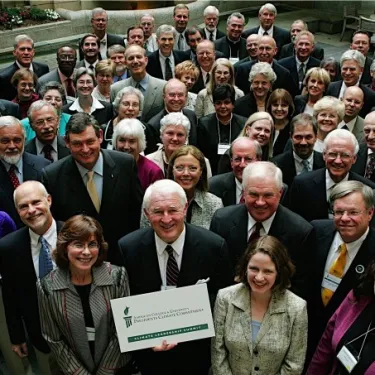
In 2007, after students had pushed for several years for climate action, UVM became a charter member of the American College & University Presidents’ Climate Commitment (now the Carbon Commitment). As part of this high-visibility effort organized by Second Nature, participating institutions committed to neutralizing campus greenhouse gas emissions over time and accelerating research and education to restabilize the Earth’s climate. The first step was to report on the campus' annual greenhouse gas emissions.
2008: Eco-Certified Custodial Products Purchased
In 2007 students advocated for the use of sustainable tissue products (paper towels, toilet paper, tissues and napkins) because more than half the products used on campus were produced from wood from virgin forests. Custodial Services responded by ensuring only Green Seal or ECOLOGO certified products would be purchased in the future. Additional product contracts were also influenced, resulting in more environmentally friendly cleaning products that are safer for the employees using them. Some tissue products used on campus are part of the P3 Closed Loop program because they are made with UVM's own office paper waste.
2008: Office of Sustainability Created
In 2008 UVM formalized the work of the Environmental Council by establishing the Office of Sustainability (OoS), charged with fostering sustainable development and promoting the integration of social and environmental responsibility into academics, culture, operations and policy. OoS was tasked with implementing the Carbon Commitment, overseeing the Clean Energy Fund, supporting sustainability education, and reporting on sustainability metrics. Today OoS manages the Eco-Reps and Sustainability Ambassadors programs and supports planning processes, while continuing to report on UVM's sustainability performance and serve as a hub for campus sustainability information.
2008: Clean Energy Fund Created
In response to an endorsement by the Student Government Association (SGA), UVM became one of the first U.S. universities to establish a "Clean Energy Fund" through a $10/semester student fee. The $225,000 annual fund has since supported 40+ projects about energy education, research, and renewable energy,a total investment of over $1.5M. Projects are evaluated by the Socially Responsible Investing Advisory Council (SRIAC). In 2020, SGA advocated for expanding the original scope of the fund to include a broader range of sustainability ideas, and the fund has since been renamed the Sustainable Campus Fund.
2009: Sustainability Faculty Fellows Program Established
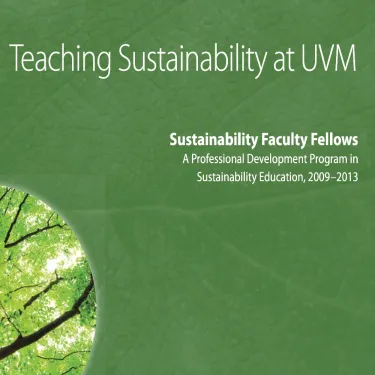
his multidisciplinary learning community engages in a year-long exploration of sustainability, systems thinking and pedagogy. Originally conceived to further integrate concepts of sustainability throughout the undergraduate curriculum (especially beyond environmental sciences), the program has evolved to examine sustainability through the lenses of equity, diversity, and social justice, and connects the curriculum to the United Nations Sustainable Development Goals. The SFF Program laid a strong foundation for the 2015 adoption of a Sustainability General Education requirement and has influenced the creation of student internships, co-curricular programs, and use of the campus as a living laboratory. In 2020 the Contemplative Faculty Learning Community was born in parallel with this community.
2010-2019
2010: Students Advance Bike Culture
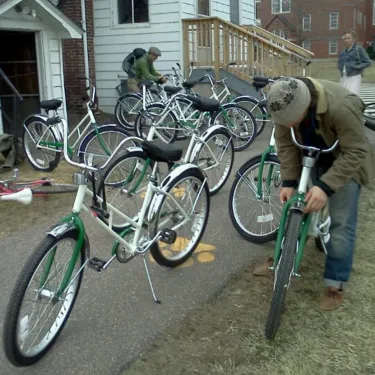
The Bicycle Users Group (BUG) club was formed by students to promote bicycling on campus. Transportation and Parking Services worked with BUG to create the Bicycle Education Co-operative, a space to maintain the bike share bicycles. BUG became UVM Bikes in 2018 and now manages the co-op, offers rentals, coordinates group rides, sells discounted helmets, and services bikes of students and employees while providing education to the bike owners. All of these offerings contribute to UVM's recognition as a Bicycle Friendly University, advancing from Bronze to Gold from 2014 to 2020.
2010: Climate Plan Created
In 2010 UVM set ambitious targets to meet the Carbon Commitment signed in 2007. As part of this plan, sustainability studies became integrated into the curriculum, and UVM has now sourced 100% certified renewable electricity since 2015. While natural gas has remainewd the primary heating fuel for UVM for decades, the backup fuel has changed over time from #6 oil to #2 oil, resulting in lower emissions. Transportation emissions have also dropped as a result of active transportation initiatives. Overall greenhouse gas emissions in 2018 were 41% lower than in 2007.
2011: Reusable Takeout Program Begins
After testing the idea with the help of GreenHouse Program residents and a Community Development class, UVM Dining officially rolled out its reusable to-go container program, EcoWare. Members of the campus community could buy into the reusable container program for a one time cost of $7.50 and receive a discount each time they used it, instead of a disposable container. The program started at just two retail locations, Brennan's and Marche, with a $0.15 discount. The program then grew to include a $0.25 discount for soup containers accepted at all campus dining locations. In 2015 the program became free for all first-year students as part of their meal plans. In fall 2020 UVM Dining expanded the program in response to COVID and estimated that the program avoided the use of more than 5000 disposable to-go containers per week! UVM Dining also runs reusable mug, bottle and utensil programs. Learn about all of their sustainability initiatives here.
2012: Real Food Challenge Commitment Signed
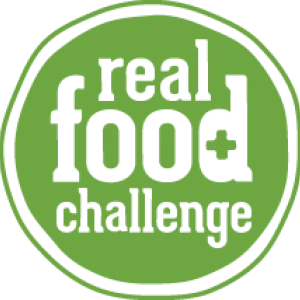
In 2009 UVM became one of the first universities where students audited campus food purchases using guidelines. Led by student demand, UVM officially signed onto the Real Food Challenge in 2012, committing to purchase 20% local, humane, fair trade and organic food by 2020. The Real Food Working Group was created in partnership with UVM Dining to help implement this commitment. In 2014, UVM solidified and expanded this commitment to sustainable food values by issuing a groundbreaking request for proposals (RFP) for its next dining contract. The RFP required vendors to agree to transparent sourcing of local and Real Food, implementation of waste reduction programs, and greater integration of dining into academic initiatives and vice versa. When UVM Dining exceeded 20% Real Food in 2017, UVM committed to buy 25% Real Food by 2020; this goal was achieved in 2019.
2013: Campus Supports Trees & Bees
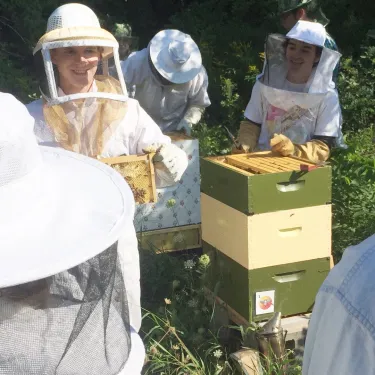
UVM was given a Tree Campus USA designation in 2013 for commitment to and demonstration of effective urban forest management. UVM was recognized as a Bee Campus USA in 2017 for commitment to the creation and maintenance of sustainable habitats for pollinators, which are vital to feeding the planet. UVM has maintained both designations by continuing the programs in both areas since they were initially awarded. UVM Grounds Services practices are also aligned with these initiatives. They use Integrated Pest Management methods of pest control; favor hardy native plants; limit irrigation to athletic fields and the main green; use mulching mowers; and don't bag grass clippings.
2013: Sale of Bottled Water on Campus Ends
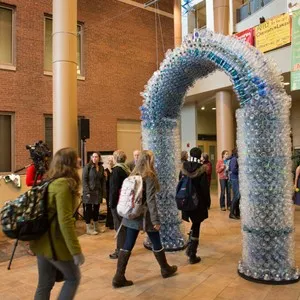
In 2013 UVM became one of the first public universities in the country to end bottled water sales. The move came in response to student concerns about bottled water being a symbol of unnecessary consumerism on campus, and being a wasteful product resulting in other communities suffering ecological damage from water extraction or plastic waste. Dining Services stopped selling bottled water on campus in vending machines and retail outlets (it had never been offered in dining halls). At the same time, water fountains across campus were retrofitted with bottle fillers. New students quickly get used to carrying their water bottles in backpacks and refilling them for free. The 2015 dining contract also included specifications about sustainable and healthy beverage choices.
2014: UVM Earns Stars Gold
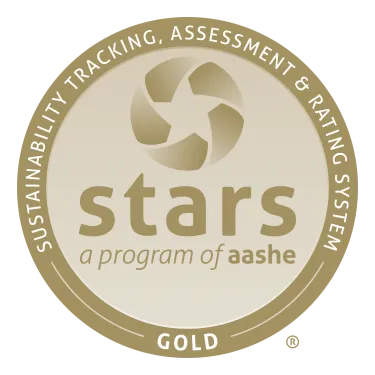
The Sustainability Tracking, Assessment & Rating System (STARS) is a transparent, self-reporting framework for colleges and universities to measure their sustainability performance. UVM has been recognized as a STARS Gold rated campus since 2014. This thorough assessment measures sustainability performance in four major categories: academics, operations, engagement, and planning and administration. The data collected for STARS inform UVM's rankings in the Princeton Review Green College guide and Sierra Club Cool Schools list. You can read our latest STARS report here.
2014: President's Commission on Inclusive Excellence Launched
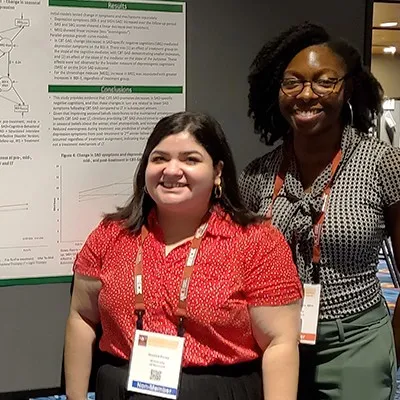
In 2014 the President’s Commission for Inclusive Excellence (PCIE) was formed. The PCIE is an institutional advisory board of undergraduate, graduate, faculty, and staff representatives, whose primary mission is to advance the strategic diversity and inclusion goals of the university. The work of PCIE is inextricably linked to advancing sustainability because many of the social, institutional, and economic structures that cause human suffering and oppression (e.g., racism, sexism, classism) are the same structures that are accelerating global climate change. Learn more about PCIE here.
2015: Sustainability Course Requirement Established
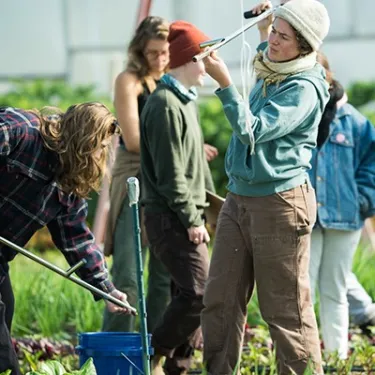
The Faculty Senate and Board of Trustees approved a new general education requirement for sustainability for all undergraduate students. By 2014, more than 75 faculty members had completed the Sustainability Faculty Fellows program and created more than 100 three-credit courses. The courses provide a broad array of options for undergraduates across many majors and colleges. The new course requirement also had strong student support. In 2014 the Student Government Association passed a resolution in support of the requirement, and a speech by one SGA Senator to the Faculty Senate was so compelling it deserves to be called a "turning point" for sustainability education at UVM. Read about the Sustainability General Education Requirement here.
2015: 100% Renewable Electricity Purchased
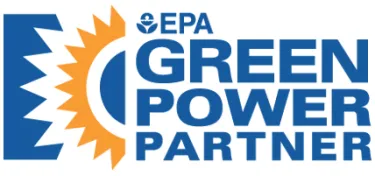
As part of participation in the Carbon Commitment, UVM committed to using 100% renewable electricity starting in 2015. Since then UVM has been purchasing 100% wind power in the form of Green-E certified Renewable Energy Certificates (RECs). These RECs have been sourced primarily from the Midwest, replacing fossil fuel power in power grids that use a much dirtier fuel mix than in the Northeast. UVM is a member of the EPA's Green Power Partnership, whose partners' power use comprises about 40% of the voluntary green power market.
2017: Central Plant Expanded
A major expansion of the central chilled water system used for air conditioning was completed in 2017 to meet the cooling needs for the growing central campus (the STEM complex and the Central Campus Residence Hall). The Central Plant expansion included installing a new 1500-ton electric chiller; adding 7500 square feet to the footprint of the historically significant building; and constructing a large brick enclosure to house cooling towers and related equipment. System features include a "free cooling" condenser water system that allows cold outside air temperature to be used instead of the electric chiller for year-round cooling needs in research buildings. The "hybrid" flexibility to use electricity or steam or a combination of both has resulted in a highly efficient, strategic and resilient way to provide cooling for campus buildings.
2017: Active Transportation Plan Published
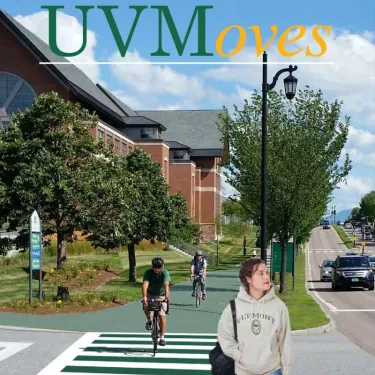
Transportation & Parking Services has many programs to help students and employees arrive at and navigate campus in a low-impact manner. In 2017, UVM completed UVMoves, an active transportation plan with recommendations for engineering, education, encouragement, enforcement and evaluation methods for improving the transportation conditions on campus, and for establishing a culture that supports walking, bicycling and other forms of non-motorized mobility. UVM has also added many electric vehicle charging stations and covered/indoor bike parking, instituted a Green Fleet Procurement policy and integrated a sustainable transportation module into the parking pass purchase process.
2017: Regional Bikeshare Launched
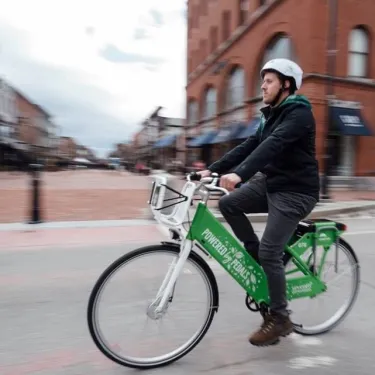
In April 2018 the regional bikeshare Greenride launched with UVM as a key founding sponsor and member of the team that coordinated the launch and continues to monitor the program's success. In 2010 Transportation and Parking Services and student club the Bicycle Users Group partnered to start an internal bicycle library as a strategy to reduce the need for student cars coming to campus. This foundation became the basis for the improvements we see today.
2019: Sustainability Ambassador Program Launched
The Sustainability Ambassadors program was modeled from UVM's long standing Eco-Reps program, with the goal of empowering, encouraging and supporting the many employees who already unofficially advocate for and promote sustainability in their workplaces. Ambassadors promote environmentally and socially responsible actions among peers, helping to connect employees with sustainability programs, activities and resources. A Sustainability Certificate program offered through Professional Development and Training provides in-depth understanding of systems for managing energy, transportation, waste, purchasing and other topics.
2020-Present
2020: Food Pantry Opened
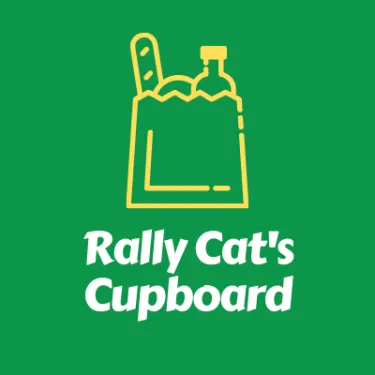
In fall 2016 faculty, staff and students started a Food Insecurity Working Group. They conducted two surveys and found that between 15-25% of the UVM community had experienced food insecurity in the past 12 months. In response, the group shared the research (PDF) and created a website with resources, including a UVM specific guide (PDF), launched a Swipe Out Hunger program, and hosted cooking workshops for at-risk students. In collaboration, Student Government Association led an effort to bring an accessible food pantry to campus, Rally Cat's Cupboard. The working group coordinated extra support for students during COVID-19 and remains active and continues to propose and pursue additional initiatives to increase food security on campus.
2020: Commitment to Fossil Fuel Divestment
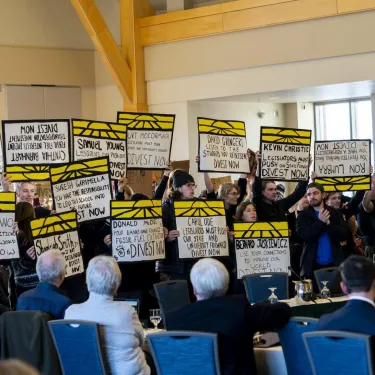
In July 2020 the university announced an immediate end to new direct investment in fossil fuels and committed to fully divesting from public investments in fossil fuels by July 2023. The endowment had divested from tobacco in 2000, from investments in Sudan in 2006, and from depleted uranium and cluster munition weapons in 2009. In 2018, on the recommendation of the Socially Responsible Investing Advisory Council, the university implemented a green bond strategy to improve the environmental, social and governance (ESG) metrics of $10 million of UVM’s $225 million of operating reserves. The green bonds portfolio was doubled to $20 million in 2019. Each spring, the university takes proxy votes related to climate change, tobacco use and advertising, employment discrimination, and anti-personnel landmines. Find more information here.
2023: Comprehensive Sustainability Plan Introduced
In April 2023, UVM announced its first Comprehensive Sustainability Plan (CSP) with the goals of achieving carbon neutrality by 2030. The CSP is the cornerstone of this effort that lays out strategies for increasing energy efficiency and reducing emissions, prioritizing decarbonization and features objectives in the areas of operations, governance and planning, and research and learning. The university will develop a program for “greening” campus labs, and reduce waste generated per campus user 10% by 2035. Over the next six years, UVM will develop a campus energy plan to help prioritize renewable energy investments, increase the percentage of electric vehicles in the fleet, make buildings more efficient, and drill geothermal test wells on campus.
Our Sustainability Journey Continues
What would you like to see happen next in UVM's journey towards a sustainable future for all? Contact us via email at sustainability@uvm.edu and get involved today!